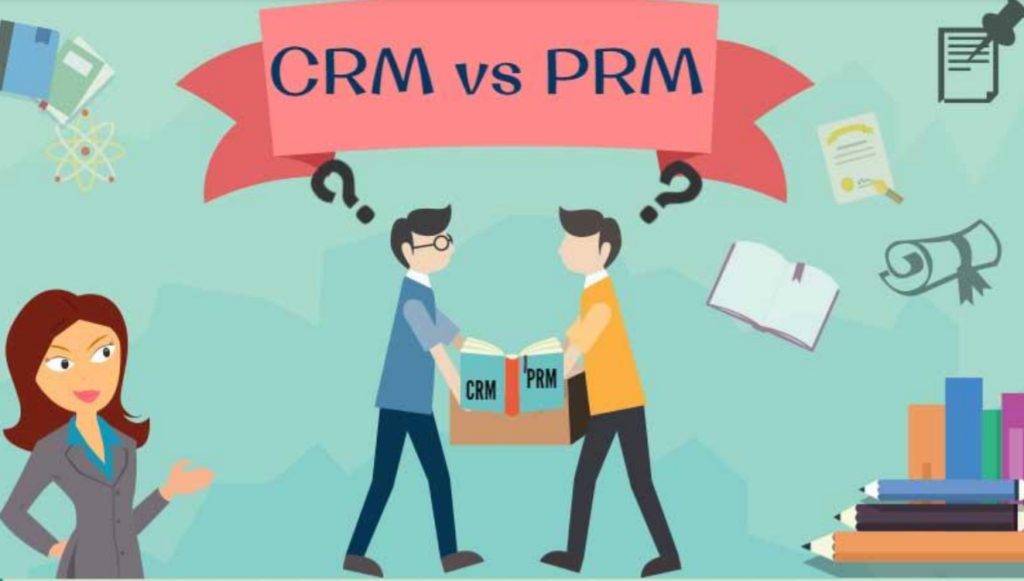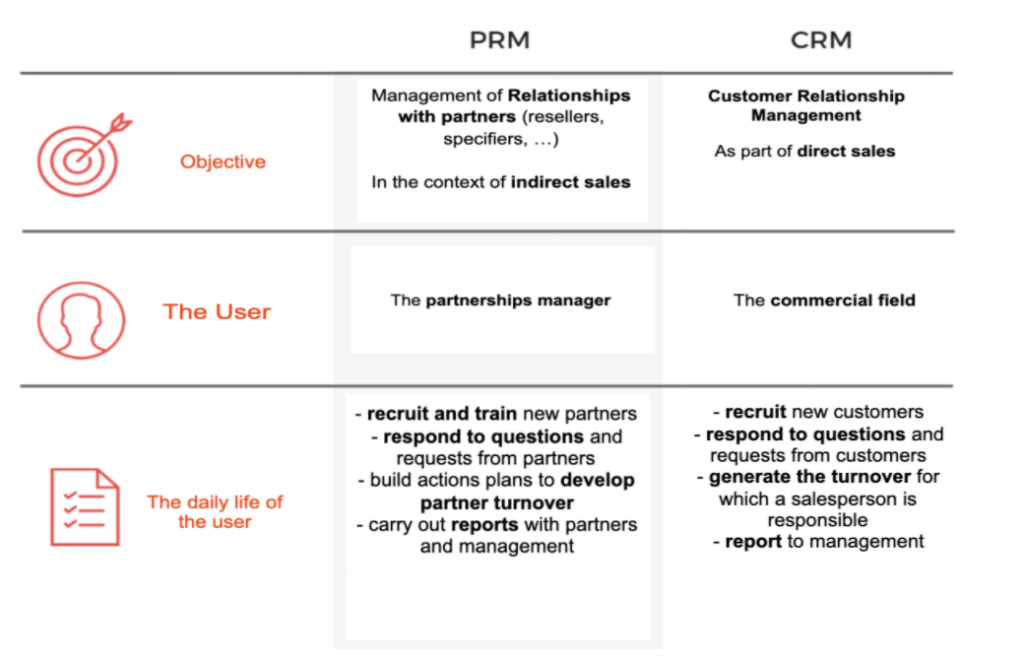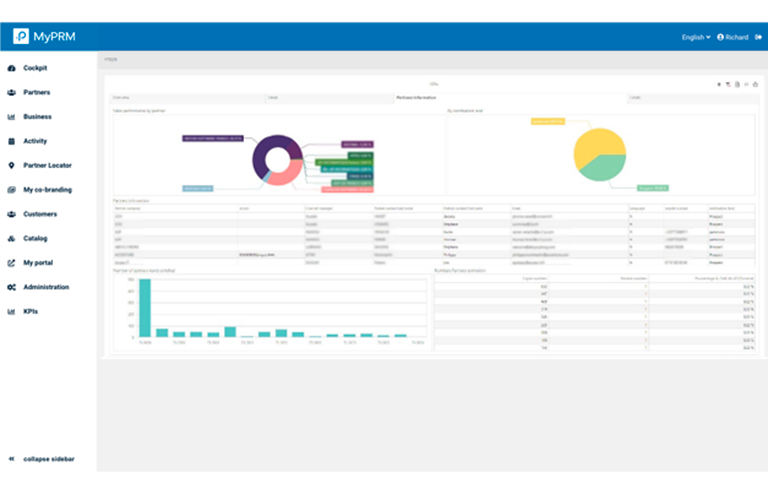
Like CRM (Customer Relationship Management) software, PRM (Partner Relationship Management) software became available in the late 1990s, but has not seen the same rise as CRM. This is somewhat surprising since 75% of B2B sales are indirect. Instead, many companies still use spreadsheets, local portals, or a host of point solutions to manage their channel programs.
Despite many attempts to use these tools interchangeably, they are in reality, complementary: They meet different needs, and also intervene at different times in the life cycle of a company.
A common question among those who believe a Customer Relationship Management tool and a Partner Relationship Management tool should be used interchangeably seems to be; But isn’t a partner a customer? Depending on the context, the answer to this question can be ‘yes’ or ‘no.’ A partner is typically an ultra-privileged customer, with whom a company will forge strong and lasting ties. Thus, PRM is necessary for the management of this deep relationship, which goes beyond a simple CRM.
We will see in this article what the differences are between a CRM and a PRM, and what the recommendations are for using each tool.
Similarities and differences between a CRM and a PRM
CRM is for sales, while PRM is for partnerships. These two tools are often compared because PRM is the natural evolution of CRM. While the purpose of a CRM tool is to optimize a company’s relations with its prospects and customers, PRM tools help companies to develop proximity with its partners.

This comparison chart shows several points in common between CRM and PRM. While there are similarities these tools are nonetheless designed for different purposes. It is therefore normal to find features specific to each of them.
For example, one of the key functionalities of a CRM tool is to be able to visualize the sales cycle of your company at any time: how many cases are in prospecting, in qualification, in negotiation, etc.
On the other hand, a PRM tool offers many features intended for partners. In particular, modules for reporting leads and deals, and online training and marketing tools. These elements are offered in a portal dedicated to partners.
Why PRMs are Necessary
The idea of customer relationship management, or CRM, has been around for years and companies like Salesforce have built billion dollar businesses around direct sales relationship management. However, the survey below shows that nine in ten hiring managers struggle to recruit direct sales professionals and as a result companies are increasingly turning to indirect sales for growth.

However, when it comes to channel management, CRM platforms, designed for the direct sales force, do not support the complexity of multi-level and multi-national partnership relationships. This is where relationship management with partners – or PRM – comes in.
How is a PRM tool structured?
The PRM brings together two tools that make it a real asset for all those involved in the partnership: The partner portal, the preferred tool for partners to manage their relationship and collaborate with the company, manage leads and opportunities, marketing actions, etc., and
the PRM platform, the daily tool of the indirect team which brings together all information concerning partners: performance monitoring, knowledge of partners, etc.
Through these two tools, PRM software promotes the autonomy and commercial efficiency of partners and groups as well as contextualizes and transcribes all the information necessary for the partnership manager to lead his partners.
Benefits of PRM
The major benefit of PRM is saving time for those responsible for partnerships by supporting them with the tasks they perform during each phase of the partner life cycle: recruitment of new partners, their training, network animation, and the development of each partner. Each of these is described in detail below.
- Recruitment of new partners.
Every partnership manager knows: The recruitment phase is as crucial as it is time consuming. One of the objectives of the PRM is to make recruiting easier by using a public portal, a web page accessible on the company’s site. This public portal will become the No. 1 tool to facilitate the recruitment of new partners as the company will be able to demonstrate the benefits of its partner program, have current partners testimonies and, above all, collect applications from new partners. - Partner training.
Training is an essential tool for the proper development of the sales network. The training phase of these new partners can be done directly in the PRM thanks to educational content made available to the partners in a content library or an e-learning module testing the expertise of the partners via quizzes. - Partner monitoring
Above all, a commercial relationship must live, and for this requires regular monitoring. Throughout the duration of the collaboration, the PRM allows those responsible for the partnerships to monitor the activities of the partners on a daily basis. If each party has the same information provided by a common portal, the PRM, exchanges are greatly facilitated during monitoring points. - Partner development: a win-win relationship!
Once partners are effective and productive, the role of partnership managers is to help them further develop results. Thanks to the PRM tool, they will be able to offer them various marketing modules to go further in the relationship. In particular, the company can offer the partner the implementation of emailing campaigns managed directly on the PRM, or even co-branding actions (a tool that allows partners to personalize models and content predefined by the brand).
PRM in action
As PRM gains a solid foundation as a market staple technology with large tech companies, channel management software is only penetrating into more traditional manufacturing industries.
Take the example of the 87-year-old fluid management brand, ARO®, Ingersoll Rand, which manufactures pumps and other fluid management products that transform nearly all commonly used fluids, from chocolate to fuel. ARO has set out to reinvent its services and support with its global partners, many of whom have been partners for decades.
“When we reflected on what we do and what mission we have taken on, it was certainly about growing our business, but also about the hundreds of thousands of families who depend on our activities for their businesses,” said ARO® Global Head of Marketing, Liz Cope. “We were looking to create a space for partners to have a unique and easier business experience and not only to continue to position ourselves as the most trusted brand in the industry, but also as a brand that considers our customers to be the best.”
ARO wanted to provide the best possible experience for its customers. One of the main features of its new Partner Portal is the Asset Library, which provides quick and easy access to sales documents and training. “Our partners are in a competitive market. Everything we do now in our portal is designed to give them the edge that their competing distributor does not have, ”said Cope.
Through efficiency, our ability to expand our partner base by receiving leads and onboarding new partners in our portal, we were able to increase that number by almost 200%,” Cope said. Cope said that one of the strongest moments in introducing the portal to a new partner was presented to the partners. “The marketing manager looked at me and said, ‘Liz, this is the holy grail. No other manufacturer than us offers this. It’s a powerful statement for our business. Implementing a PRM solution for your partners lets them know that you are listening to them.”
In an economic climate where skilled sales professionals are expensive and scarce, companies cannot put all their eggs in the direct sales basket. Companies that already have a channel need to work harder, so that those that do not, have to create one or risk being left behind.
Conclusion
It is clear that CRM and PRM are complementary tools. One cannot replace the other, simply because they are made for different purposes.
If you want to market your products and/or services only through your company’s salespeople, you need to equip yourself with a CRM. If you market your products with partners (often in addition to your internal sales team) through indirect selling, your best ally will undoubtedly be the PRM.
MyPRM offers a PRM tool that helps to establish better relationships with partners thus increasing sales. Contact us if you would like to learn more.






